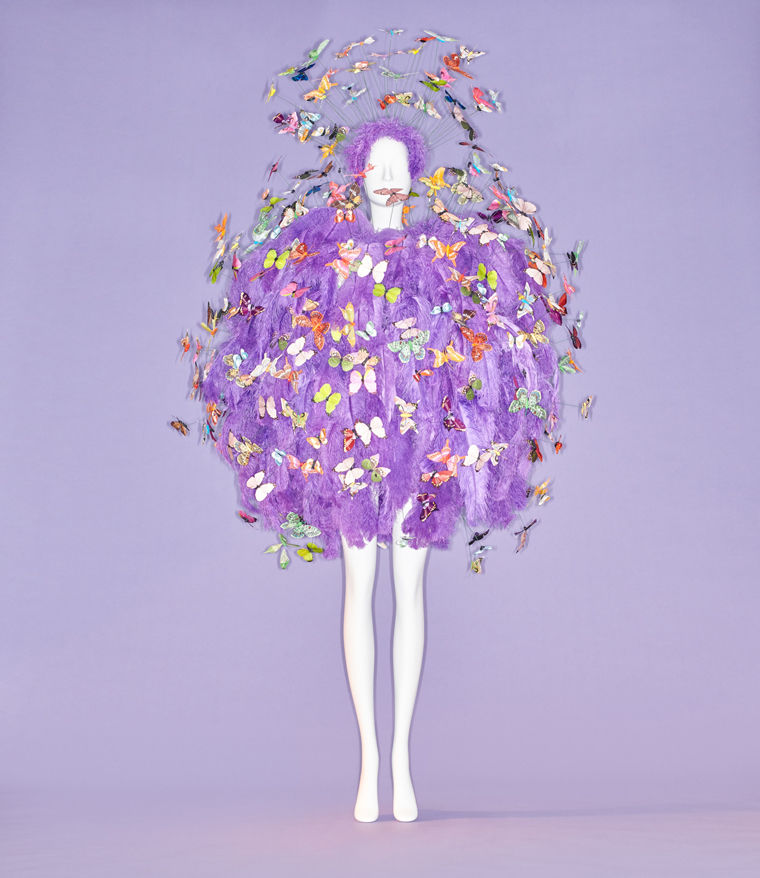 "Camp: Notes on Fashion:" the Metropolitan Museum of Art's Costume Institute show that opened on May 8 is full of color and feathers and already a big hit. It's like a day at the circus for more- or- less grown ups; a circus where frocks and accessories are the performing animals sometimes literally. The Schiapparelli hat to the right looks like Big Bird taking a couple of flamingos on a honeymoon trip.
"Camp: Notes on Fashion:" the Metropolitan Museum of Art's Costume Institute show that opened on May 8 is full of color and feathers and already a big hit. It's like a day at the circus for more- or- less grown ups; a circus where frocks and accessories are the performing animals sometimes literally. The Schiapparelli hat to the right looks like Big Bird taking a couple of flamingos on a honeymoon trip.For any who remember what it feels like to eat too much cotton candy; that's just how I felt by the time I'd walked through this exhibition from beginning to end.
In spite of the pink catalogue's thousands of words that attempt to define it, and an opening historical section that is well- worth reading, full of unknown to me information (and images), Camp as it is on display in these galleries gives shelter to a lot of extravagant frocks-- and some witty ones-- along with a few accessories. Most of it has a dubious connection to Camp (see the Tiffany lamp below) .
The curators, of course, do not find the connections dubious: Take for example, The Tiffany lamp below. Susan Sontag, who we are told (as if this is somehow miraculous, used to visit the Met regularly) included it in her famous essay on Camp. If you think Sontag was a latter-day Moses and her essay consists of 58 commandments, you will agree.
The actual criterion for what made it into this show was the stuff had to be Over the Top as for butterflies everywhere but in the stomach number by Jeremy Scott for House of Moschino. (I am a big fan of Moschino and not only because he chose Olive Oyl for his muse .Fun yes, whacky also but Camp?

OTT is not Camp, or let's say it is can be a part but the whole? Not. So anything from a dress with a Merry- Go- Round for a skirt and a frock embroidered with a Surrealist image by Jean Cocteau is classified as Camp but is not.
Too much sugar is bad for the brain--and other important organs as for instance, the eyes. This show--and the gala that opened it is an advertisement for Enough is Too Much already.





